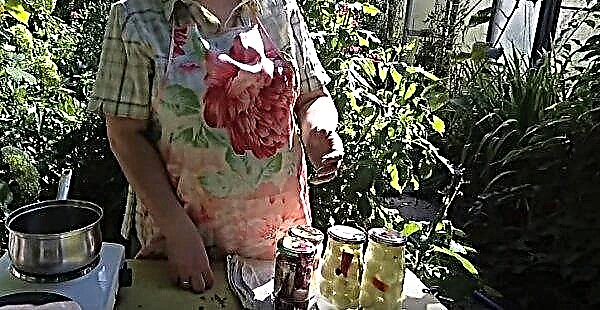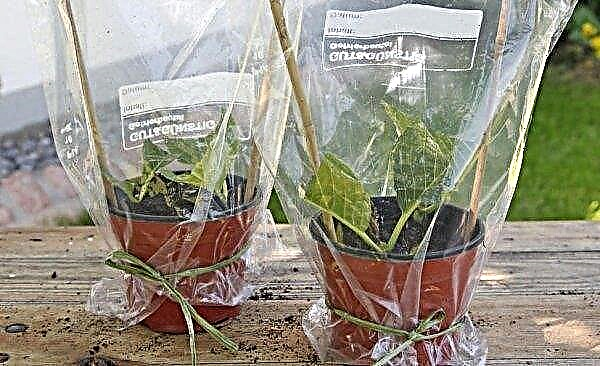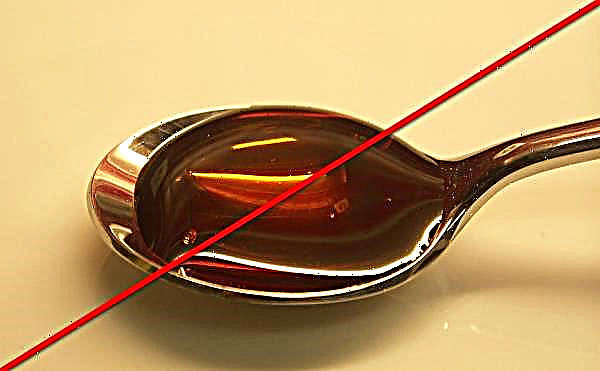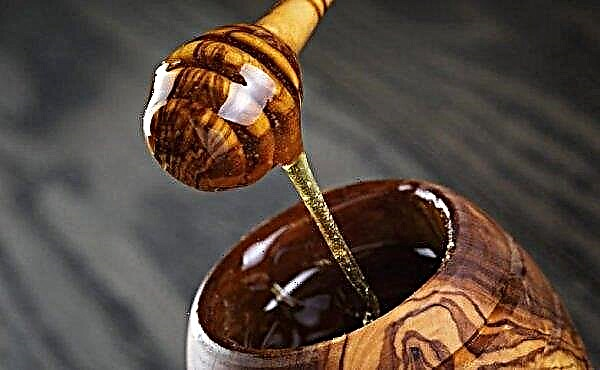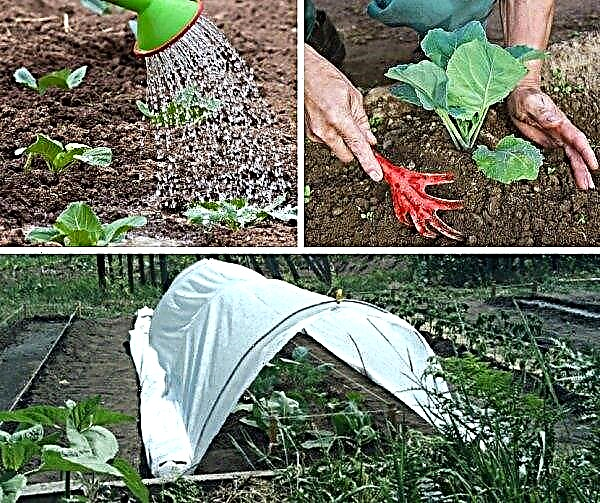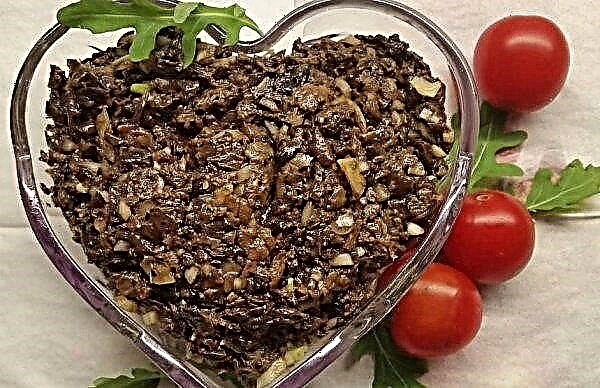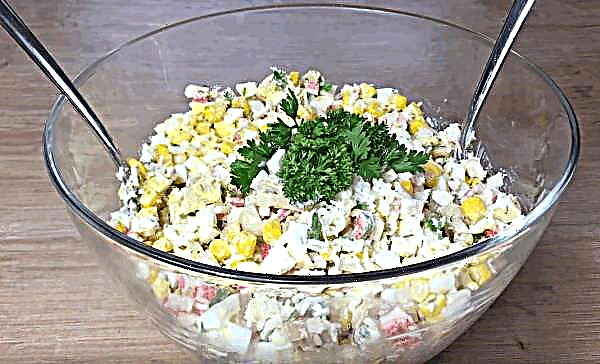A cage in which decorative rabbits spend almost their entire life should be comfortable, meet the vital needs of the animal, look good externally and allow the owners to observe the pet and look after it. How to make a cage for a decorative rabbit with your own hands will be discussed in the article.
Basic requirements for the content of decorative rabbits
A decorative rabbit, being a gentle, fragile and finicky creature, requires some efforts and constant attention to take care of itself. In order for the animal to always look good and feel comfortable, he needs housing, namely a cage.
Not everyone knows what a cage should be for a rabbit to live in an apartment. You can buy a finished design, but you can do it yourself.
When constructing a home for a furry pet, a number of requirements should be taken into account:
- The cage must be prepared and equipped with everything necessary before acquiring a rabbit, and not after.
- In no case do not allow the animal to overheat. A comfortable temperature for a decorative rabbit is 18–20 ° С.
- Do not exceed a humidity level of 50%.
- Any drafts should be avoided, however, the animal should be provided with fresh air, since stuffiness is detrimental to the pet.
- Do not allow the animal to fall even from a small height because of the danger of damaging the fragile spine.
- Keep the rabbit tray clean, clean and wash it daily.
- The animal must have constant and unhindered access to clean water.
- In order not to appear tangle on the animal’s hair, you need to constantly comb it.
- In good weather, you should walk the rabbits in the fresh air using a leash.
- Better than cages can only be aviaries inside a person’s home, but they need extra space, which is not in every apartment.
 If all these conditions are carefully observed, then, with proper care, a decorative rabbit is able to live with a cell content of an average of up to 7 years, and sometimes up to 12 years.
If all these conditions are carefully observed, then, with proper care, a decorative rabbit is able to live with a cell content of an average of up to 7 years, and sometimes up to 12 years.Did you know? The rabbit eyes set on the sides of the muzzle are capable of circular viewing, so it is impossible to sneak up behind this animal unnoticed.
How to make a cage for decorative rabbits with your own hands
For decorative rabbits, there are many different cages that differ from each other in design, design and materials used.
However, for an amateur rabbit breeder who decided to build a home-made dwelling for dwarf or decorative rabbits, it is important that this process does not stretch in time, is not burdensome in terms of money, simple in execution and gives an acceptable result. Here is one of the options that meet these requirements.
Dimensions
About what size will be the future rabbit cage, can be judged by this drawing: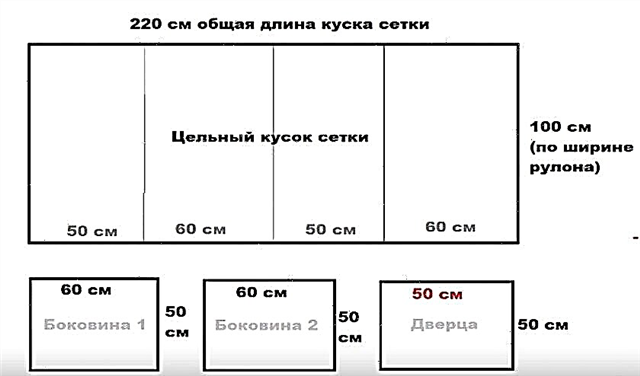
Materials and tools for work
For the manufacture of this cells will need such materials and tools:
- galvanized wire mesh with cells 25 × 25 mm and a bar thickness of 1.8 mm;
- knitting wire;
- wooden blocks with a section of 50 × 50 mm and a length of 500 mm - 2 pcs.;
- pieces of reinforcement with a diameter of 12 mm and a length of 1200 mm - 2 pcs .;
- plastic clamps;
- Bulgarian;
- clipper with staples;
- yardstick.
DIY rabbit cage: video
Step-by-step manufacturing instructions
To build a cage for an eared pet, you must:
- Mark on the net roll the sidewalls and doors.
- Use a grinder to cut them.
- On a meter-wide roll, measure a piece 2200 mm long and cut it off with a grinder.
- On the resulting piece of mesh measure 600 mm in length.
- Put on the grid across the board along the measured line and bend the grid at right angles to the board.
- Measure 500 mm and bend the net again in the same way.
- Now measure 500 mm from the other end and also bend them at right angles. The result was a box with still empty sidewalls.
- Using a clipper, connect the joint between the upper and side faces of the bent main section of the mesh.
- Attach both sidewalls using the same clipper.
- Then cut a hole for the door on one of the long sides of the parallelepiped, for which a threshold should be left below the center of the side with a height of 50 mm and a width of 450 mm, and cut the rest of the grid of this width to the very top.
- Using the clipper, attach the left edge of the door to the left edge of the resulting doorway.
- On the opposite side of the door, fasten 2 hooks made of knitting wire for locking the cage.
- Place the cage on top of the ground and attach to its bottom on both sides along the length of the cage using plastic clamps 2 pieces of reinforcement so that their ends on both sides protrude beyond the cell by 100 mm.
- Return the cage to its normal position and place the protruding reinforcing ends on the wooden bars placed on both sides of the cage.

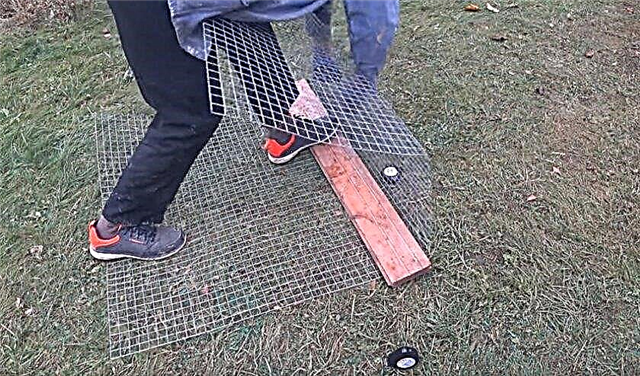




After this, the housing for the decorative rabbit is ready for its internal arrangement.
How to arrange a cell inside
Equipping everything a rabbit needs in a cage is often no simpler than building a cage. The mood, health and longevity of the animal depend on how well the rabbit habitation will be arranged.
Floor and bedding
Since the rabbit, unlike cats and dogs, has no pads on its feet, the lattice floor in the cage is strictly contraindicated. Therefore, a coarse mesh floor should be covered with a rug or other coating that protects rabbit paws from uneven surfaces.
Most often in the animal’s dwelling they make a bed of hay, straw, peat or sawdust up to 50 mm thick.
Important! It is imperative that you clean the mat or replace the litter in the rabbit's cage at least 3 times a week.
Feeding troughs and drinking bowls
A moving animal likes to turn over everything that is poorly fixed in the cage. Including the feeder. Therefore, for the pet, feed containers made of heavy ceramics or of lighter plastic, not highly fixed to the wall, are best suited.
It is also necessary to equip the sennik in a rabbit dwelling in the form of a light lattice structure, which is hung low on one of the walls and where hay and young branches of fruit trees are laid. In addition, it is important that the rabbit has constant and unhindered access to clean drinking water. In this regard, it is useful to install an auto-drinker in the cage. However, one must take into account the fact that rabbits drink water in sips, and automatic drinkers that dispense water drop by drop are not suitable for them, as is done for birds.
In addition, it is important that the rabbit has constant and unhindered access to clean drinking water. In this regard, it is useful to install an auto-drinker in the cage. However, one must take into account the fact that rabbits drink water in sips, and automatic drinkers that dispense water drop by drop are not suitable for them, as is done for birds.
Therefore, it is best to use auto-drinkers designed specifically for rodents.
Shelters
As a burrowing animal in wildlife, a rabbit in captivity needs shelter. Without him, he feels defenseless, is depressed and experiences constant stress. In addition, the biorhythms of this animal are tuned for a nocturnal lifestyle, so during the day it is less active and prone to solitude.
Therefore, a shelter must be present in the rabbit housing, most often made of wood or corrugated cardboard. At the same time, cardboard is preferable, since the animal loves to improve its shelter, gnawing at it either new windows or emergency exits.
After some time, the shelter turns into a sieve and needs to be replaced, after which everything starts all over again. Troubles with the arrangement of their shelter, being a favorite activity for a rabbit, are at the same time the best anti-stress agent that prolongs the life of an animal.
Did you know? Rabbit whiskers protrude to the sides to the width of the body and allow the animal not to run into obstacles even in complete darkness.
Cell disinfection
Although at home keeping decorative rabbits, the likelihood of their disease is much less than in specialized rabbit farms, nevertheless it is not excluded, since the pets are taken for a walk outside, where a dangerous infection is possible. In addition, there are cases when a rabbit acquires an already-used cage. In any case, rabbit cell disinfection is the best prophylactic that prevents possible negative developments.
In addition, there are cases when a rabbit acquires an already-used cage. In any case, rabbit cell disinfection is the best prophylactic that prevents possible negative developments.
Before disinfecting, the rabbit’s home should be thoroughly cleaned and washed.
After drying, you can use disinfectants, for example, such:
- Virocid;
- Ecocide C;
- Glutex;
- Virosan;
- Virkon C;
- Creolin
- Delegol;
- alcohol iodine solution;
- ash base;
- formaldehyde solution;
- bleaching powder;
- soda ash.
Possible problems
Rabbits are gentle animals that need specialized care.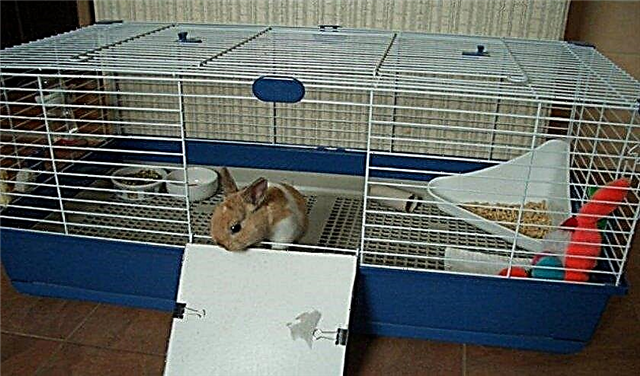 Ignoring some features of the life of these animals leads to serious problems:
Ignoring some features of the life of these animals leads to serious problems:
- Rabbits are susceptible to many diseases, therefore preventive measures are so important to prevent them.
- Food should be as balanced as possible in all the most important ways. The presence of hay is especially important, because continuously growing rabbit teeth need grinding, which best ensures constant chewing of this roughage.
- There may be problems with the formation of tangles. In order to prevent this, constant care for the hair of the animal is necessary.
- Often problems are created due to overgrown claws of the animal. The difficulty is to shorten the claws without stressing the animal.
- Swimming is very stressful for these animals, so they should be washed only in the most extreme cases.
- Overheating is very dangerous for rabbits because they do not have sweat glands and cool the body through the blood vessels in their long ears. If overheating does occur, it is necessary to wipe the animal’s ears with a damp cloth or cover it with the entire cage on top.
- The rabbit is very sensitive to the attitude of the owners. If he does not feel concern on their part, he can qualify this as his own defenselessness and undergo deep stress, which noticeably shortens the life of the animal.
 Since the first step in settling a cute eared pet at home begins with the acquisition and arrangement of the cage, many beginner rabbit breeders decide to make this step with their own hands.
Since the first step in settling a cute eared pet at home begins with the acquisition and arrangement of the cage, many beginner rabbit breeders decide to make this step with their own hands.Important! In case of an eared pet disease, you should immediately consult a veterinarian. Treatment of the delicate organism of a decorative rabbit requires caution and in-depth professional knowledge.
Home-made rabbit dwellings, built with fiction and love, quickly pay back all the costs with the reciprocal love of a wonderful animal, if only this feeling can be estimated financially.

